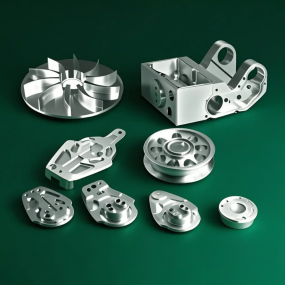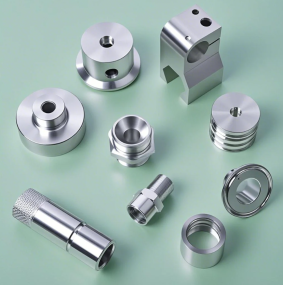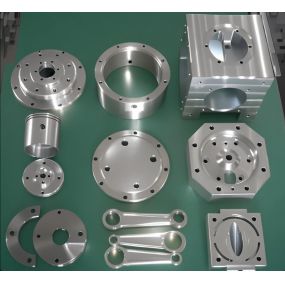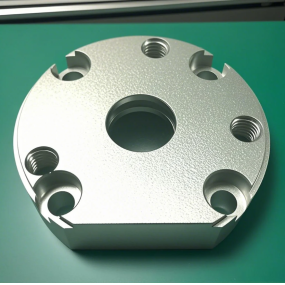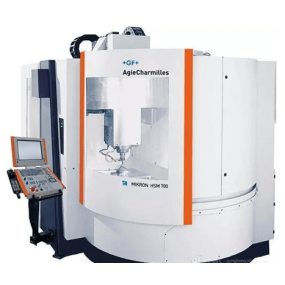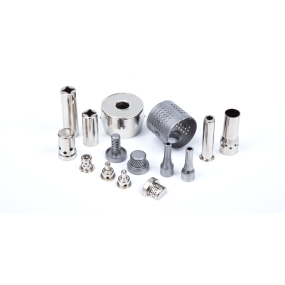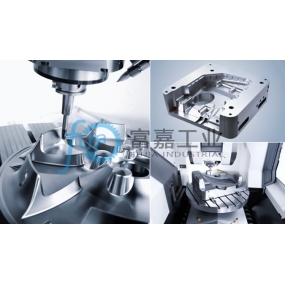(1) General CNC machine tools. This type of machine tool has the same types as traditional general-purpose machine tools, including CNC lathes, milling cutters, boring machines, drill bits, grinders, etc., and each has multiple varieties. For example, CNC milling machines have end mills, horizontal milling cutters, tool milling cutters, gantry milling cutters, etc. The technical feasibility of this machine tool is similar to that of a general-purpose machine tool, but the difference is that it can process complex shaped parts.
(2) Multi coordinate CNC machine tool. Some complex shaped parts cannot be machined with a three coordinate numerical control machine, such as propellers, aircraft curved parts, etc. The required shape for processing requires a composite motion of three or more coordinates. So multi coordinate CNC machine tools emerged, characterized by a large number of axes controlled by the CNC device and a complex machine tool structure. The number of coordinate axes usually depends on the technical requirements of the machined parts. The commonly used ones are NC machine tools with coordinates of 4, 5, and 6.
(3) CNC Machining center machine tools. This type of machine tool was developed on the basis of general CNC machine tools. NC machine tools with automatic switching devices (also known as multi process CNC machine tools or boring and milling machining centers, commonly referred to as machining centers) are formed by installing tool libraries (which can accommodate 10-100 or more tools) and automatic switching devices on general NC machine tools. This further promotes the development of CNC machine tools towards automation and efficiency.
The difference between CNC machining center machine tools and general CNC machine tools is that after clamping the workpiece once, the CNC device controls the machine tool to automatically replace the tool, continuously milling (turning), boring, drilling, and completing multiple processes such as hinge and tapping on each machining surface of the workpiece. This type of machine tool is mostly used for boring and milling, mainly for machining box parts. Compared with ordinary CNC machine tools, it has the following advantages:.
① Reduce the number of machine tools, make it easy to manage, and only one machine tool is needed to complete all processing of multi process parts, reducing the inventory of semi-finished products
② The workpiece is clamped only once, thus reducing positioning errors caused by multiple installations and ensuring machining quality based on the accuracy of the machine tool
③ Centralized processes, reduced auxiliary time, and improved productivity
④ One machine tool can complete multiple machining processes by clamping parts in one go, greatly reducing the number of specialized fixtures and further shortening production preparation time.
CNC machine tool centers have numerous advantages and are highly popular among users, thus occupying an important position in CNC machine tool production.
In addition, it is a machining center developed based on lathes, mainly processing shaft parts. In addition to turning and boring, it can also perform drilling, milling, and tapping on any part of the end face and circumference. A tool library is also set up in such machining centers, which can install 4-12 tools. It is customary to call such machine tools turning centers.


 Spanish
Spanish Arabic
Arabic French
French Portuguese
Portuguese Belarusian
Belarusian Japanese
Japanese Russian
Russian Malay
Malay Icelandic
Icelandic Bulgarian
Bulgarian Azerbaijani
Azerbaijani Estonian
Estonian Irish
Irish Polish
Polish Persian
Persian Boolean
Boolean Danish
Danish German
German Filipino
Filipino Finnish
Finnish Korean
Korean Dutch
Dutch Galician
Galician Catalan
Catalan Czech
Czech Croatian
Croatian Latin
Latin Latvian
Latvian Romanian
Romanian Maltese
Maltese Macedonian
Macedonian Norwegian
Norwegian Swedish
Swedish Serbian
Serbian Slovak
Slovak Slovenian
Slovenian Swahili
Swahili Thai
Thai Turkish
Turkish Welsh
Welsh Urdu
Urdu Ukrainian
Ukrainian Greek
Greek Hungarian
Hungarian Italian
Italian Yiddish
Yiddish Indonesian
Indonesian Vietnamese
Vietnamese Haitian Creole
Haitian Creole Spanish Basque
Spanish Basque

